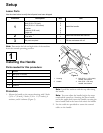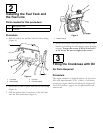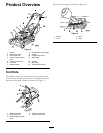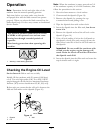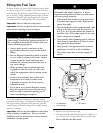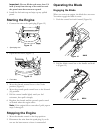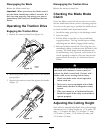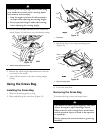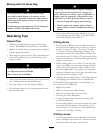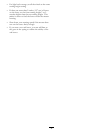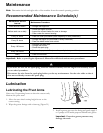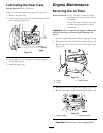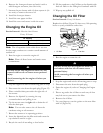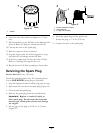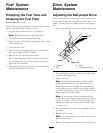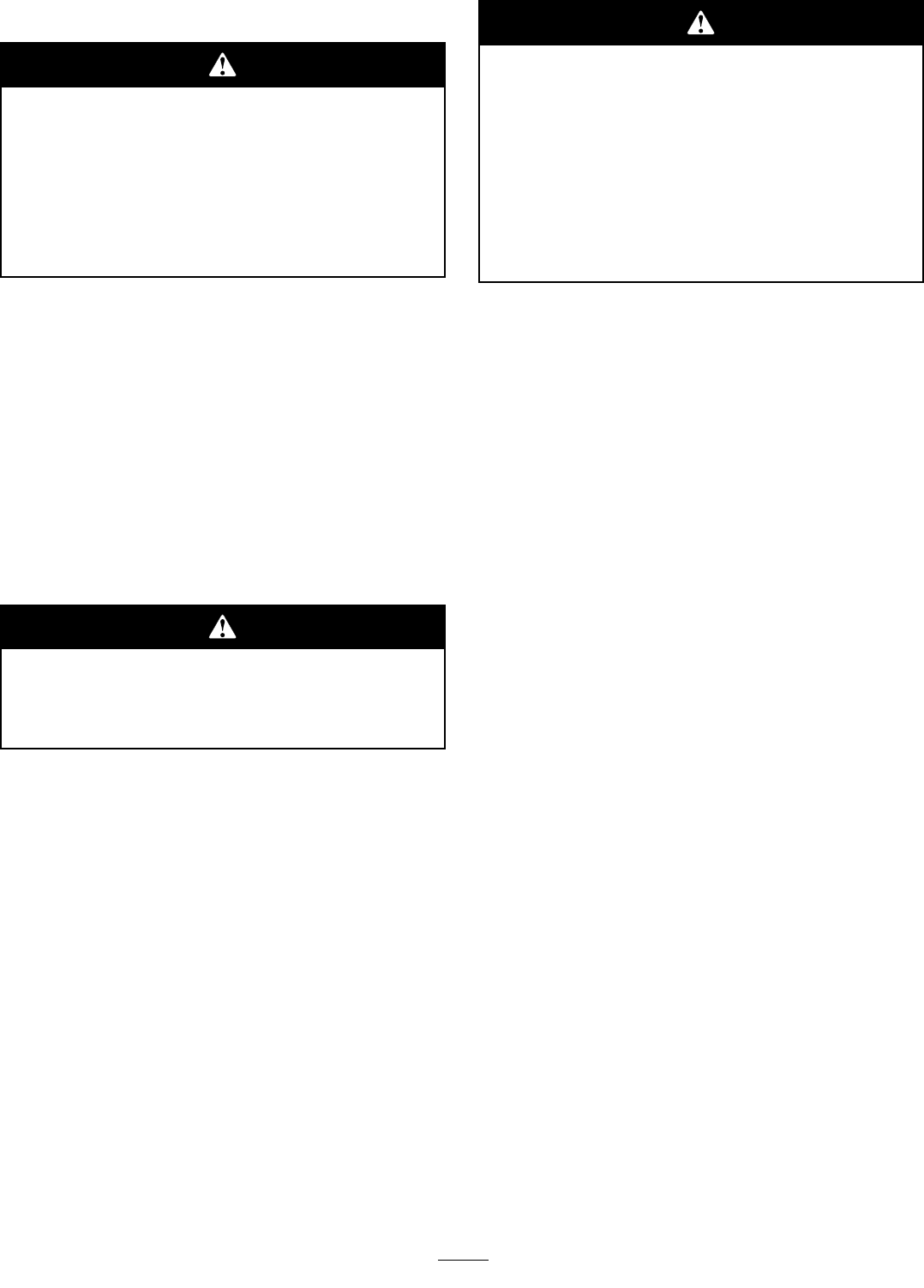
Mowing with the Grass Bag
A worn grass bag could allow small stones
and other similar debris to be thrown in the
operator’s or bystander’s direction and result in
serious personal injury or death to the operator
or bystanders.
Check the grass bag frequently. If it is damaged,
install a new Hayter replacement bag.
Operating Tips
General Tips
• Maintain a sharp blade throughout the cutting
season. Periodically le down nicks on the blade.
• Replace the blade when necessary with an original
Hayter replacement blade.
• Mow only dry grass or leaves. Wet grass and leaves
can build up and clog in the chute or cause the
engine to stall.
Wet grass or leaves can cause serious injury if
you slip and contact the blade.
Mow only in dry conditions.
• Clean under the mower housing after each mowing.
See Cleaning under the Mower Housing.
• Keep the engine in good running condition.
• Set the engine speed to the fastest position for the
best cutting results.
Operating a mower with its engine running at
a speed greater than the factory setting can
cause the mower to throw a part of the blade or
engine into the operator’s or bystander’s area
and result in serious personal injury or death.
– Do not change the engine speed setting.
– If you suspect the engine speed is faster
than normal, contact an Authorized Service
Dealer.
• Clean the air lter frequently. Mulching stirs up
more clippings and dust which clogs the air lter
and reduces engine performance.
Cutting Grass
• Grass grows at different rates at different times of
the year. In the summer heat, it is best to cut grass
at the 2-1/4 inch (57 mm), 2-3/4 inch (70 mm), or
3-1/4 inch (83 mm) cutting height settings. Cut
only about a third of the grass blade at a time. Do
not cut below the 2-1/4 inch (57 mm) setting unless
the grass is sparse or it is late fall when grass growth
begins to slow down.
• When cutting grass over 6 inches (15 cm) tall, rst
mow at the highest cutting height setting and walk
slower; then mow again at a lower setting for the
best lawn appearance. If the grass is too long and
the leaves clump on top of the lawn, the mower may
clog and cause the engine to stall.
• Alternate the mowing direction. This helps disperse
the clippings over the lawn for even fertilization.
If the nished lawn appearance is unsatisfactory, try
one or more of the following:
• Sharpen the blade.
• Walk at a slower pace while mowing.
• Raise the cutting height on your mower.
• Cut the grass more frequently.
• Overlap cutting swaths instead of cutting a full
swath with each pass.
• Set the cutting height on the front wheels one notch
lower than the rear wheels. For example, set the
front wheels at 2-1/4 inches (57 mm) and the rear
wheels at 2-3/4 inches (70 mm).
Cutting Leaves
• After cutting the lawn, ensure that half of the lawn
shows through the cut leaf cover. You may need to
make more than one pass over the leaves.
14



